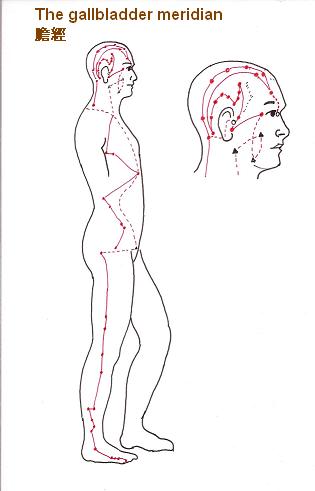When physicians design an acupuncture prescription, they tend to select a group of body points with the same or similar indications, in order to strengthen the efficacy of acupuncture treatment. Besides selecting individual points carefully, attention should also be paid to the way of combining one point with others. There are some rules for acupoint combination that can provide extra flexibility and achieve a synergistic effect.
- Combining distal and local: when diseases occur in a particular organ or meridian, it is appropriate to select one distal point and one adjacent point on the affected meridian. For example, coughing due to lung problem, zhong fu (Lu 1, the alarm point of the lung meridian) locally is used and then points like chi ze (Lu 5) and tai yuan (Lu 9) are selected in the distal section.
- Combining interior and exterior: Certain organs have an interior and exterior relationship with each other, which is due to a special way of meridian connecting. It is recommended that diseases of the zang organs can be treated by combining the points on the corresponding meridians of the fu organs, and vice versa. The body points with special therapeutic effects play important roles for this. Clinically, the way of combination using a source point and its corresponding connecting point is an example of this. For example in stomach pain and vomiting, the points zu san li (St 36, sea point of the stomach meridian) and gong sun (Sp 4, connecting point of the spleen meridian) are usually selected.
- Combining back and front: The chest and abdomen are yin in aspect; while the back region belongs to yang. When treating diseases of the organs, physicians usually select points on the back, and match them with points on the chest and abdomen. For example, the method of combining the back transport points with alarm points is often used when treating diseases of the internal organs, the five sense organs or body tissues corresponding to the internal organs.
- Combining above and below: This is the most widely used method today. There is a saying in The Vital Axis: "For disease in the upper body, one should select the points below it; for diseases in the lower body, one should select the points above it; for diseases on the head, a point in the foot should be selected; for diseases in the lumbar region, points at the back of knee should be selected." Selecting the eight confluent points is an example of this method. Moreover, for diseases in the head and chest regions, physicians tend to combine points of the meridians that run on the arm and the leg with the same yin/yang name. For example, in treating mouth and nasal problems, he gu (Li 4) on the arm brightness yang meridian and nei ting (St 44) on the leg brightness yang meridian will be selected.
-
 Gallbladder meridian
Combining left and right: Because the meridians run symmetrically on the sides of body, most of the acupoints are bilateral. It is common to treat diseases of the internal organs by stimulating the same point on both sides in order to strengthen the efficacy. For example, since migraine is confined to the head region, a region mostly regulated by the gallbladder meridian, physicians will select relevant points like han yan (Gb 4) and xuan lu (Gb 5) locally on the gallbladder meridian of the affected side, and also yang ling quan (Gb 34) and xia xi (Gb 43) on the other side distally.
Gallbladder meridian
Combining left and right: Because the meridians run symmetrically on the sides of body, most of the acupoints are bilateral. It is common to treat diseases of the internal organs by stimulating the same point on both sides in order to strengthen the efficacy. For example, since migraine is confined to the head region, a region mostly regulated by the gallbladder meridian, physicians will select relevant points like han yan (Gb 4) and xuan lu (Gb 5) locally on the gallbladder meridian of the affected side, and also yang ling quan (Gb 34) and xia xi (Gb 43) on the other side distally.
For acupuncture novices, in addition to being familiar with how each meridian runs on the body and their major indications, they should also know the locations and properties of all individual acupoints along the meridians.
 Gallbladder meridian
Combining left and right: Because the meridians run symmetrically on the sides of body, most of the acupoints are bilateral. It is common to treat diseases of the internal organs by stimulating the same point on both sides in order to strengthen the efficacy. For example, since migraine is confined to the head region, a region mostly regulated by the gallbladder meridian, physicians will select relevant points like han yan (Gb 4) and xuan lu (Gb 5) locally on the gallbladder meridian of the affected side, and also yang ling quan (Gb 34) and xia xi (Gb 43) on the other side distally.
Gallbladder meridian
Combining left and right: Because the meridians run symmetrically on the sides of body, most of the acupoints are bilateral. It is common to treat diseases of the internal organs by stimulating the same point on both sides in order to strengthen the efficacy. For example, since migraine is confined to the head region, a region mostly regulated by the gallbladder meridian, physicians will select relevant points like han yan (Gb 4) and xuan lu (Gb 5) locally on the gallbladder meridian of the affected side, and also yang ling quan (Gb 34) and xia xi (Gb 43) on the other side distally.

